Introduction
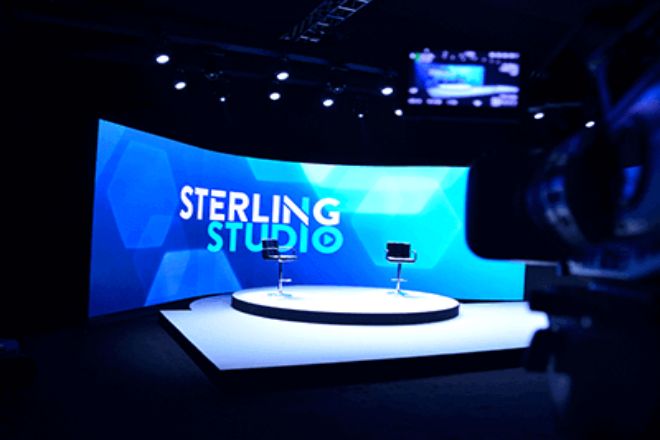
Sur la scène d'un festin visuel, la technologie FHD (Full High Definition) et la technologie LED sont sans aucun doute deux étoiles brillantes. Elles vont de pair pour nous offrir un plaisir visuel sans précédent.
Avez-vous déjà été impressionné par la clarté de chaque détail sur le téléviseur ? Avez-vous déjà été enivré par les images colorées et superposées ? Derrière tout cela se cache le charme de la haute définition du FHD et les excellentes performances de la technologie LED.
Cet article vous fera découvrir en profondeur les mystères de la technologie FHD et LED et vous dévoilera comment elles fonctionnent ensemble pour façonner l'expérience visuelle moderne. Nous irons droit au but et analyserons clairement les avantages de la FHD et les caractéristiques de couleur et de luminosité de la LED afin que vous puissiez avoir une nouvelle compréhension de ces deux technologies en quelques minutes seulement.
Plus important encore, nous explorerons comment ces technologies sont appliquées à la vie quotidienne, du divertissement à domicile à l’apprentissage au bureau, et dans un domaine plus large, comment elles rendent notre monde plus coloré et plus pratique.
1. Qu’est-ce qu’un écran FHD ?
FHD, dont le nom complet est Full High Definition, est une technologie d'affichage avec une résolution de 1920 × 1080 pixels. Cette résolution peut fournir des images claires et détaillées, offrant aux utilisateurs une expérience visuelle de haute qualité.
Par rapport aux autres résolutions :
- HD (haute définition) :
Il s'agit généralement d'une résolution de 720p ou 1080i. Bien qu'elle puisse également fournir des images relativement claires, elle manque de nombre de pixels et de détails d'image par rapport à la FHD. Les écrans avec une résolution HD peuvent sembler légèrement rugueux lors de la lecture de vidéos HD, en particulier sur les appareils à grand écran.
- 4K (Ultra Haute Définition) :
La résolution est de 3840×2160 pixels, soit quatre fois celle du FHD. Les écrans 4K dépassent de loin le FHD en termes de clarté, de reproduction des couleurs et d'affichage des détails, et peuvent offrir une expérience visuelle plus réaliste. Cependant, le contenu 4K est relativement rare, nécessite des exigences matérielles élevées et est relativement cher.
L'avantage du FHD en termes de clarté est que sa résolution modérée peut garantir la clarté de l'image sans imposer une charge trop importante au matériel. En même temps, il est compatible avec la plupart des scénarios d'application. Cependant, par rapport à la 4K, le FHD présente encore certaines limitations en termes d'affichage des détails et de reproduction des couleurs.
1). Caractéristiques techniques
- Capacité de reproduction des couleurs :
Les écrans FHD offrent une grande précision dans la reproduction des couleurs et peuvent présenter des couleurs riches et réalistes. Cela est dû à sa densité de pixels élevée et à sa technologie d'affichage avancée, qui permet à chaque pixel de l'écran d'exprimer avec précision les informations de couleur, présentant ainsi une image plus réaliste.
- Détails:
Les écrans FHD sont très performants pour équilibrer la qualité de l'image et la taille du fichier. Sa résolution modérée garantit la clarté de l'image sans que le fichier soit trop volumineux, garantissant ainsi une lecture fluide sur une variété d'appareils. De plus, les écrans FHD prennent également en charge une variété de formats vidéo et de méthodes d'encodage, permettant aux utilisateurs de regarder facilement une variété de contenus vidéo haute définition.
- Compatibilité:
Les écrans FHD sont extrêmement populaires sur différents appareils et sont presque devenus le choix dominant sur le marché. Qu'il s'agisse d'un smartphone, d'une tablette, d'un ordinateur portable ou d'un téléviseur, les écrans FHD sont largement utilisés. Cette grande popularité permet de partager et de lire facilement le contenu FHD entre différents appareils, apportant une grande commodité aux utilisateurs.
2). Scénarios d'application
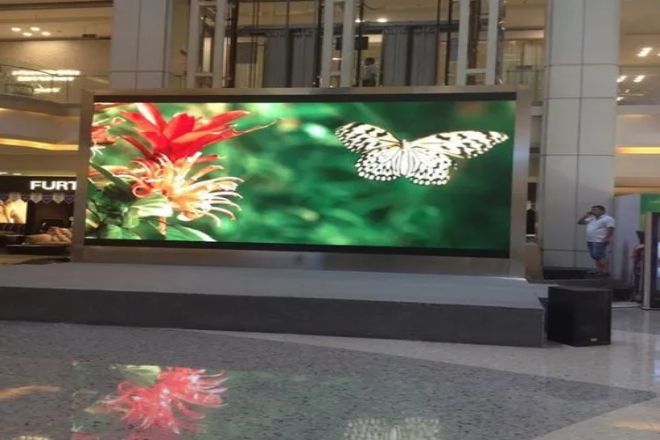
2.1). Publicité et promotion commerciales
Panneaux d'affichage extérieurs : Les écrans LED FHD sont souvent utilisés pour les panneaux d'affichage extérieurs dans les zones animées des villes. Ils attirent l'attention des piétons grâce à des images dynamiques et des couleurs vives et améliorent la visibilité de la marque et les effets promotionnels.
Centres commerciaux et centres commerciaux : à l'intérieur ou à l'extérieur des centres commerciaux, les écrans LED FHD peuvent être utilisés pour diffuser des publicités sur les produits, des informations promotionnelles et des vidéos de promotion de la marque, offrant aux commerçants des outils marketing efficaces.
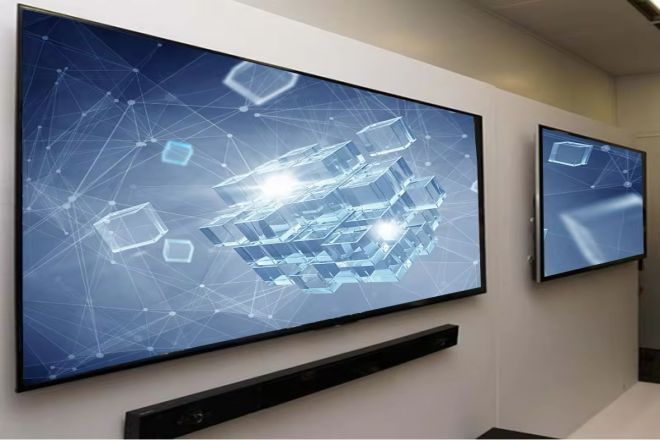
2.2). Divertissement à domicile :
Les téléviseurs, projecteurs et autres appareils FHD ont apporté un bond qualitatif dans l'expérience de visionnage à domicile. La haute définition et les capacités de reproduction des couleurs de la FHD permettent aux utilisateurs de profiter d'une expérience visuelle proche du cinéma à la maison.
Que vous regardiez du contenu haute définition comme des films, des séries télévisées ou des sports événements, les écrans FHD peuvent fournir des effets de lecture clairs et fluides.
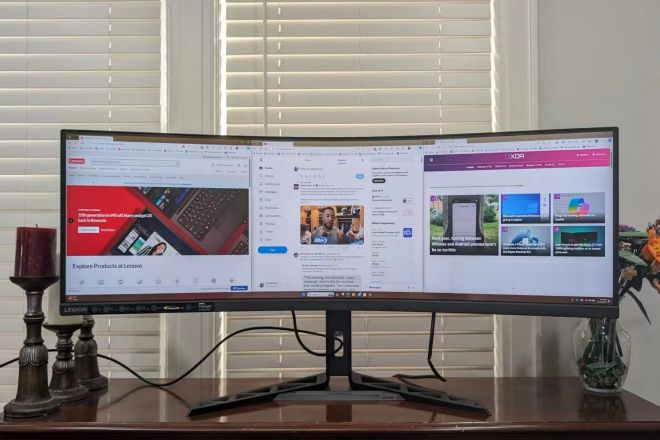
2.3). Bureau et étude :
Les écrans FHD sont également largement utilisés dans les équipements de bureau et d'étude tels que les moniteurs et les ordinateurs portables. Sa haute définition et son expérience visuelle confortable peuvent améliorer efficacement l'efficacité du travail et les effets d'apprentissage des utilisateurs.
Dans le même temps, les écrans FHD prennent également en charge l'application d'une variété de logiciels de bureautique et d'apprentissage, permettant aux utilisateurs d'effectuer l'édition de documents, le traitement d'images, l'édition vidéo et d'autres tâches plus facilement.
De plus, les écrans FHD peuvent soulager efficacement la fatigue visuelle causée par l'utilisation à long terme des ordinateurs et protéger la santé visuelle des utilisateurs.
2. Introduction aux écrans d'affichage LED
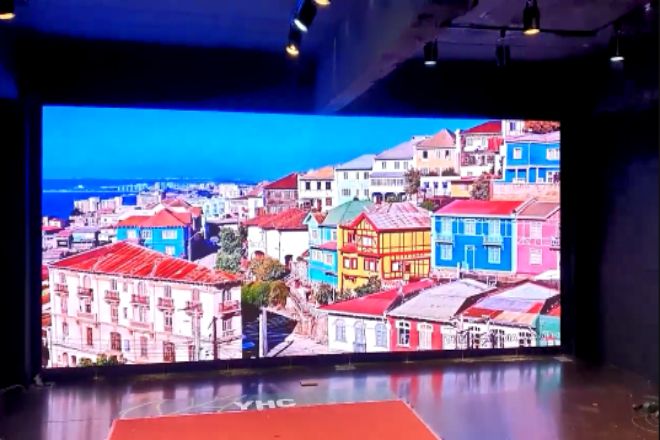
Affichage LED, dont le nom complet est Light Emitting Diode, est un dispositif semi-conducteur capable de convertir l'énergie électrique en énergie lumineuse. Son principe d'émission de lumière est basé sur l'effet électroluminescent des matériaux semi-conducteurs.
Lorsque le courant traverse la jonction PN du semi-conducteur, les électrons et les trous se recombinent pour libérer de l'énergie et émettre de la lumière sous forme de photons. Les écrans LED présentent des avantages significatifs, tels qu'une efficacité élevée, une longue durée de vie et une protection de l'environnement.
Avantages de la LED :
Haute efficacité : les sources lumineuses d'affichage LED ont une efficacité lumineuse élevée et peuvent convertir plus d'énergie électrique en énergie lumineuse, réduisant ainsi le gaspillage d'énergie.
Long vie:Les écrans LED ont une longue durée de vie, généralement jusqu'à des dizaines de milliers d'heures, dépassant de loin les sources lumineuses traditionnelles.
Protection de l'environnement : l'écran LED ne contient pas de substances nocives, telles que le mercure, et ne pollue pas l'environnement pendant la production et l'utilisation, ce qui est conforme au concept de protection de l'environnement vert.
1). Technologie d'affichage LED
1.1). Analyse de la technologie de rétroéclairage :
- Rétroéclairage direct :
Les perles de lampe LED sont disposées directement derrière le panneau LCD pour fournir une source de lumière uniforme et suffisante.
Cette méthode peut améliorer la luminosité et le contraste de l’image, mais peut entraîner une augmentation de l’épaisseur de l’écran et de la consommation d’énergie.
- Rétroéclairage latéral :
Les perles de lampe LED sont disposées sur le cadre de l'écran et la lumière est répartie uniformément sur l'ensemble de l'écran à travers la plaque de guidage de la lumière. Cette méthode permet de réduire l'épaisseur de l'écran et la consommation d'énergie, mais des problèmes de luminosité inégale peuvent survenir sous certains angles.
1.2). Gestion des couleurs et réglage de la luminosité :
- Gestion des couleurs :
Les écrans LED offrent des performances de couleurs riches en contrôlant précisément la luminosité et la proportion des trois LED de couleurs primaires : rouge, vert et bleu. La technologie avancée de gestion des couleurs peut améliorer la saturation et la précision des couleurs, rendant l'image plus vive et plus réaliste.
- Luminosité ajustement:
L'écran LED prend en charge la technologie de gradation intelligente, qui peut ajuster automatiquement la luminosité de l'écran en fonction de la lumière ambiante et des besoins de visualisation. Cela peut non seulement améliorer le confort de visualisation, mais également économiser efficacement de l'énergie.
2). Avantages et défis
2.1). Avantages :
Haute luminosité : l'écran LED a un niveau de luminosité élevé, ce qui peut garantir des images claires et visibles même dans des environnements à forte luminosité.
Large gamme de couleurs : en contrôlant précisément les caractéristiques d'émission de lumière des LED, les écrans LED peuvent couvrir une gamme de couleurs plus large et présenter des couleurs plus riches.
Temps de réponse rapide : le temps de réponse des écrans LED est extrêmement court et ils peuvent réagir rapidement aux changements de signaux d'image, réduisant ainsi les bavures et le flou.
2.2). Défis :
Contrôle de la consommation énergétique : à mesure que la luminosité et la résolution des écrans LED augmentent, leur consommation énergétique augmente également en conséquence. Réduire la consommation énergétique tout en garantissant la qualité de l'image est un défi important auquel nous sommes actuellement confrontés.
Cohérence des couleurs : En raison des différences dans les caractéristiques d'émission de lumière des perles de lampe LED, comment garantir la cohérence des couleurs de l'ensemble de l'écran est un autre problème qui doit être résolu.
Réduction des coûts : Bien que les écrans LED présentent des avantages significatifs en termes de performances, leurs coûts de fabrication restent élevés. La question de savoir comment réduire davantage les coûts pour promouvoir leur vulgarisation et leur application est l'un des axes actuels de l'industrie.
3. L'intégration et les différences entre les écrans FHD et LED
1). Application combinée
- La prévalence et les avantages des produits combinés FHD+LED :
Sur le marché, la combinaison des technologies FHD (Full High Definition) et LED (diode électroluminescente) est très courante, notamment dans le domaine de la télévision. Le téléviseur FHD à rétroéclairage LED est un représentant typique de cette combinaison.
Cette combinaison exploite pleinement la haute résolution du FHD ainsi que la haute luminosité et la large gamme de couleurs du rétroéclairage LED pour offrir aux utilisateurs une meilleure expérience visuelle.
La technologie de rétroéclairage LED peut améliorer considérablement le niveau de luminosité des téléviseurs FHD afin que l'image soit toujours clairement visible dans les environnements lumineux. Dans le même temps, la large gamme de couleurs des LED rend également les performances des couleurs plus vives et plus riches.
Par exemple, dans un centre d'exposition commercial, tous les exposants souhaitent présenter leurs produits ou services de la manière la plus attrayante possible. À l'heure actuelle, un immense écran d'affichage FHD+LED est devenu le centre d'attention de l'exposition.
Cet écran d'affichage occupe non seulement un mur de la zone d'exposition, mais attire également un grand nombre de visiteurs grâce à son excellente qualité d'image et sa luminosité.
- Comment améliorer encore l’effet d’affichage :
La combinaison FHD+LED améliore non seulement l'effet d'affichage du téléviseur, mais répond également aux exigences des utilisateurs en matière de qualité d'image haute définition et d'excellentes performances de couleur. Afin d'améliorer encore l'effet d'affichage, les fabricants optimisent également en permanence la technologie de rétroéclairage LED et la technologie de gestion des couleurs.
Par exemple, l’utilisation de perles de lampe LED plus avancées et d’une technologie de contrôle de partition de rétroéclairage plus sophistiquée peut encore améliorer le contraste et l’uniformité des couleurs de l’image.
Dans le même temps, la technologie de gradation intelligente et la technologie d'étalonnage des couleurs peuvent garantir le meilleur effet d'affichage dans différents environnements d'éclairage.
2). Comparaison technique
2.1). Effet d'affichage
2.1.1). Écran d'affichage à LED :
Haute luminosité : les écrans d'affichage LED ont généralement une luminosité élevée et conviennent à une utilisation à l'extérieur ou dans des environnements à forte luminosité.
Large gamme de couleurs : les écrans d'affichage LED peuvent couvrir une gamme de couleurs plus large, présentant des couleurs plus vives et plus riches.
Contraste dynamique : Grâce à la capacité de réponse rapide des billes de lampe LED, les écrans d'affichage LED fonctionnent bien en contraste dynamique et conviennent à la lecture de contenu vidéo en évolution rapide.
2.1.2). Écran d'affichage FHD :
Haute résolution : la résolution FHD garantit la clarté et les détails des images et des vidéos.
Reproduction des couleurs : selon la technologie d'affichage spécifique (comme LCD ou OLED), les écrans d'affichage FHD peuvent présenter des couleurs plus réalistes.
Angle de vue:Les écrans d'affichage FHD avec des technologies telles que l'écran LCD peuvent avoir certaines limitations en termes d'angles de vision, mais les écrans d'affichage FHD avec des technologies telles que l'OLED ont un angle de vision plus large.
2). Scénarios d'application
- Écran d'affichage LED :
Principalement utilisé dans les panneaux d'affichage extérieurs, les stades, les arrière-plans de scène, les panneaux de signalisation, les communiqués d'information et d'autres occasions nécessitant une luminosité élevée et un grand angle de vision.
Parallèlement, avec le développement de la technologie, les écrans d’affichage LED sont progressivement entrés dans le domaine des affichages commerciaux intérieurs.
- Écran Full HD :
largement utilisé dans l'électronique grand public telle que les téléviseurs, les écrans d'ordinateur, les téléphones portables, les tablettes et les équipements d'affichage professionnels tels que l'imagerie médicale, la conception et le dessin.
3). Comparaison des fonctionnalités
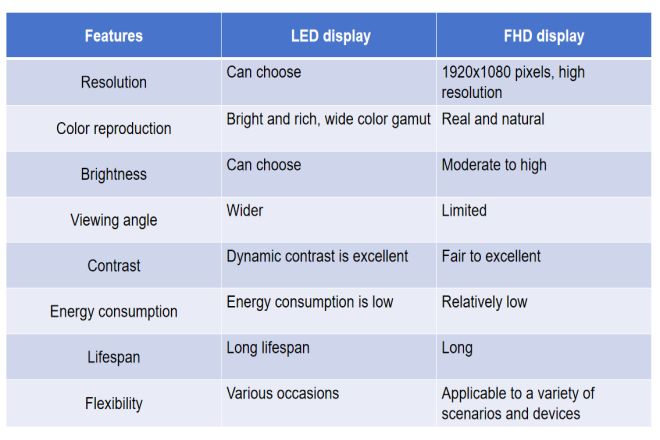
4. Développement futur de l'affichage FHD et de l'affichage LED
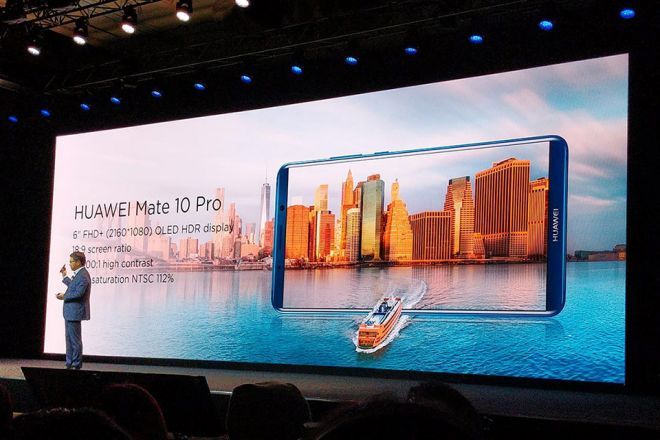
1). Développement futur de l'affichage LED
1.1). Croissance de la taille du marché
Avec la reprise progressive de la demande intérieure et les progrès continus de la technologie, le marché des écrans LED connaîtra une croissance soutenue.
Selon les prévisions du China Business Industry Research Institute, le marché des écrans LED se redressera progressivement en 2024 et la taille du marché augmentera pour atteindre 63,4 milliards de yuans (source des données : GGII, China Business Industry Research Institute).
D'autre part, les données de l'Institut de recherche économique et industrielle de Chine montrent que l'échelle du marché chinois des écrans LED atteindra 63,5 milliards de yuans en 2022 et devrait atteindre 68,4 milliards de yuans en 2023, montrant une tendance de croissance constante.
1.2). Progrès technologique et innovation
- Technologie Mini/Micro-LED :
En tant que nouvelle génération de technologie d'affichage de base, Mini/Micro-LED présente d'excellentes caractéristiques telles qu'un effet d'affichage élevé, une faible consommation d'énergie, une intégration élevée et une durée de vie technique élevée.
Ces technologies améliorent non seulement l'effet d'affichage, mais favorisent également l'application des écrans LED dans davantage de domaines, tels que les appareils portables, l'électronique grand public portable, les écrans automobiles, etc.
- Technologie de pixels virtuels :
Cette technologie améliore la résolution de l'affichage sans augmenter le coût d'espacement et est devenue l'une des technologies clés de l'industrie de l'affichage direct LED qui met l'accent à la fois sur « l'économie d'argent et une bonne qualité d'image ».
Selon les observations de l'exposition ISLE 2024, la technologie des pixels virtuels est devenue la technologie stratégique de « première impulsion » pour l'ensemble de l'industrie.
- Technologie d'emballage MiP :
En tant que solution de réduction des coûts et d'amélioration de l'efficacité pour les applications micro LED, la technologie d'emballage MiP abaisse le seuil technique pour la popularisation des micro LED et accélère sa popularité sur le marché.
1.3). Extension du scénario d'application
Les scénarios d'application des écrans d'affichage LED seront plus étendus, couvrant la publicité, les médias, les affichages commerciaux, organiser représentations, villes intelligentes, la réalité virtuelle et d’autres domaines.
En particulier dans la construction de villes intelligentes, les écrans d’affichage LED deviendront un outil important pour la diffusion et la gestion des informations urbaines.
Avec la popularisation de la technologie VR/AR/XR et l'expansion des scénarios d'application, l'application des écrans d'affichage LED dans le tournage virtuel, les cinémas et d'autres aspects a également montré une grande vitalité du marché.
1.4). Renseignement et intégration
Les écrans d'affichage à LED accorderont davantage d'attention à l'intégration profonde avec des technologies telles que l'Internet des objets, le big data et le cloud computing, réaliseront des fonctions telles que la surveillance à distance, le contrôle intelligent et l'analyse des données, et offriront aux utilisateurs des solutions d'affichage plus pratiques, efficaces et intelligentes.
2). Développement futur de l'affichage LED FHD (Full High Definition)
2.1). Évolution des parts de marché
Bien que les produits FHD (1080P) soient toujours les principaux produits du marché, leur part de marché est érodée par les produits QHD (2K) et UHD (4K). Selon un rapport de Luotu Technology, au premier semestre 2024, les produits FHD représentaient près de 50% de part de marché, mais ont chuté de 5 points de pourcentage par rapport à l'année précédente.
Avec la popularisation du contenu multimédia et l'augmentation du contenu vidéo haute définition, les utilisateurs ont tendance à acheter des écrans QHD et UHD avec de meilleurs effets d'affichage pour obtenir une expérience visuelle plus immersive et délicate.
2.2). Mise à niveau et substitution technologiques
Dans certains domaines spécifiques, comme les dalles d'affichage des smartphones, la résolution FHD+ (entre FHD et WQHD) remplace la résolution FHD traditionnelle.
Cette tendance est particulièrement évidente sur les smartphones Android, et la demande d'OLED en résolution FHD+ a considérablement augmenté, stimulée par des produits dérivés tels que la série Huawei Mate 60.
Cependant, dans le domaine des écrans d'affichage LED, les produits à résolution FHD constitueront toujours une part importante du marché à court terme, mais avec l'avancement de la technologie et l'évolution de la demande du marché, sa part de marché pourrait continuer à être réduite par des produits à résolution plus élevée.
2.3). Les scénarios d’application restent
Malgré la pression concurrentielle des produits haute résolution, les écrans LED FHD ont encore une large gamme de scénarios d'application dans la publicité commerciale, les communiqués de presse, les présentations de conférences, etc. Ces domaines ont des exigences relativement tolérantes en matière d'effets d'affichage, et la résolution FHD peut déjà répondre à la plupart des besoins.
Conclusion
En résumé, la technologie FHD et la technologie LED sont les deux piliers du domaine de l'affichage actuel, chacune avec des avantages uniques et une large gamme de scénarios d'application. La technologie FHD, avec son excellente clarté, nous offre une expérience de détail visuel sans précédent, tandis que la technologie LED, avec sa haute efficacité et sa large gamme de couleurs, injecte une nouvelle vitalité aux appareils d'affichage.
La combinaison des deux a donné naissance à une série de produits d’affichage offrant d’excellentes performances et une excellente expérience, qui enrichissent considérablement notre vie visuelle.
Enfin, si vous souhaitez en savoir plus sur les écrans d'affichage LED, veuillez nous contacter.
